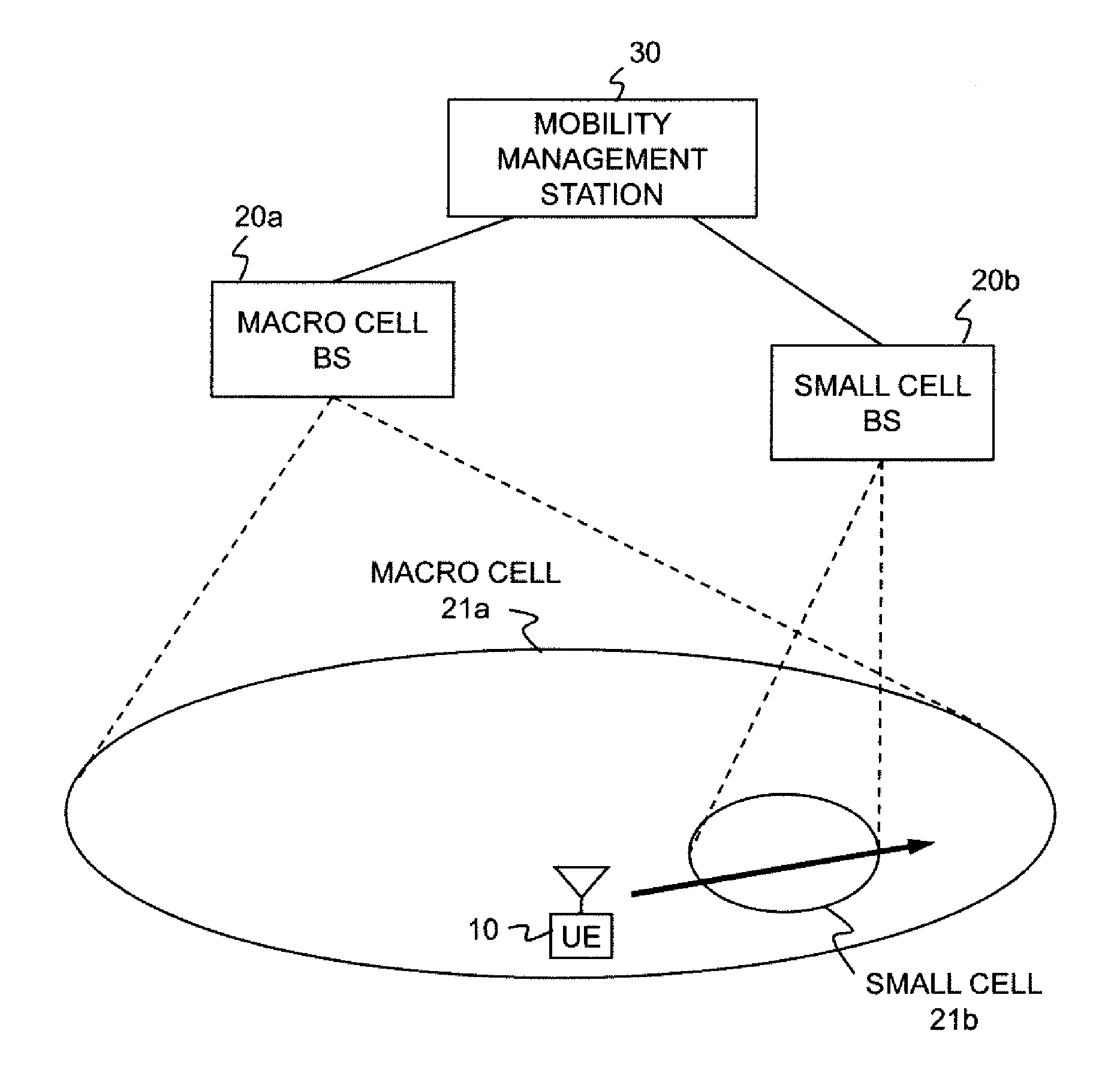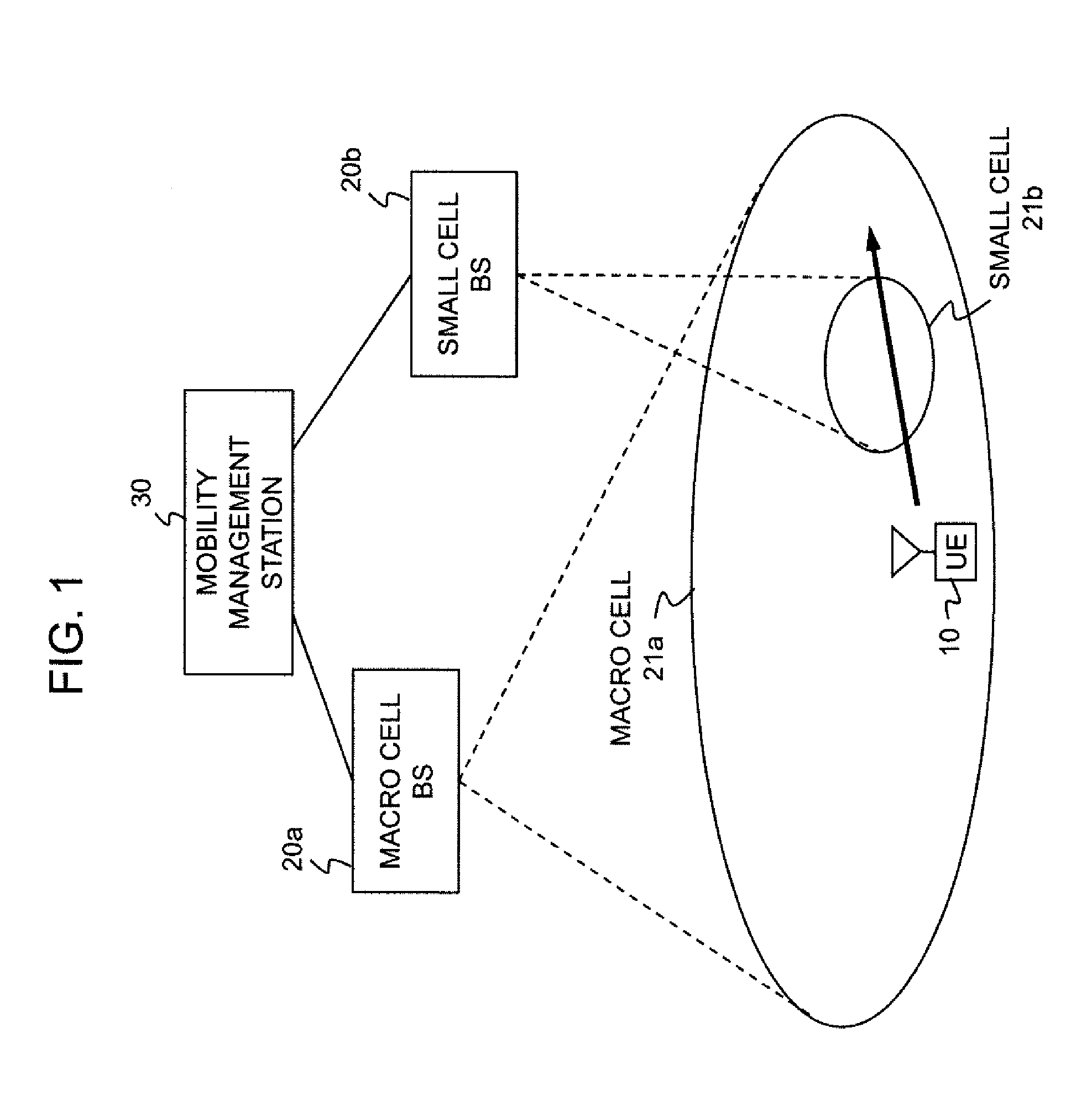Mobility control method and device in mobile communication network
- Summary
- Abstract
- Description
- Claims
- Application Information
AI Technical Summary
Benefits of technology
Problems solved by technology
Method used
Image
Examples
first example
3.1) First Example
[0065]According to a first example of a method for deciding on a mobility determination time, a cell reselection timer T_reselection is set for each neighbor cell. For example, cell reselection timers T_reselection that differ with cases where a neighbor cell is a macro cell and where a neighbor cell is a small cell are broadcast, and a mobile terminal applies a broadcast cell reselection timer T_reselection. Further, according to the present example, the range of cell reselection timer T_reselection values is extended, whereby the mobile terminal can determine a cell reselection timer T_reselection according to the mobility speed. The cell reselection timer T_reselection is thus set, whereby the start of location registration is delayed when a neighbor cell has a small cell size and / or when a mobile terminal is moving at high speed, and location registration signaling to small cells thus can be reduced. Hereinafter, the first example will be described in detail.
3....
second example
3.2) Second Example
[0081]In the above-described first example, a cell reselection timer T_reselection and / or speed-dependent scaling factor is introduced for each neighbor cell. In a second example of the method for deciding on a motility determination time, a cell reselection timer T_reselection and / or speed-dependent scaling factor is introduced for each cell type. Cell types can be classified on a cell size basis. The types have, as described already, macro cell, micro cell, and small cell in descending order of cell size, and small cells are further classified into the types of pico cell and femto cell.
3.2.1) Broadcast Information
[0082]The base station 20 periodically broadcasts broadcast information, and the mobile terminal 10 having received the broadcast information performs cell reselection based on cell reselection timer information on each cell type included in the broadcast information. The broadcast information includes cell reselection timers T_reselection and speed-dep...
third example
3.3) Third Example
[0091]According to a third example of the method for deciding on a mobility determination time, a base station broadcasts transmission power information or cell sizes (cell radiuses), whereby a mobile terminal dynamically calculates a scaling factor for each neighbor cell and applies them to a cell reselection timer T_reselection.
3.3.1) Broadcast Information
[0092]The base station 20 periodically broadcasts broadcast information, and the mobile terminal 10 having received the broadcast information estimates a cell type from the broadcast information and determines an adjustment factor. In case of LTE, transmission power information (reference power information) is notified to a mobile terminal as common radio resource information by using SIB2. In general, the larger the radius of a cell, the stronger the transmission power (reference power) of a base station. Accordingly, the mobile terminal side can estimate a cell type from reference power information. An adjustm...
PUM
 Login to View More
Login to View More Abstract
Description
Claims
Application Information
 Login to View More
Login to View More - R&D
- Intellectual Property
- Life Sciences
- Materials
- Tech Scout
- Unparalleled Data Quality
- Higher Quality Content
- 60% Fewer Hallucinations
Browse by: Latest US Patents, China's latest patents, Technical Efficacy Thesaurus, Application Domain, Technology Topic, Popular Technical Reports.
© 2025 PatSnap. All rights reserved.Legal|Privacy policy|Modern Slavery Act Transparency Statement|Sitemap|About US| Contact US: help@patsnap.com



